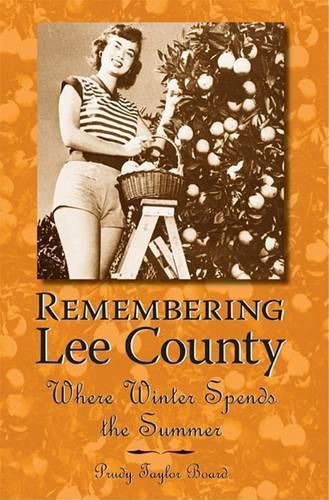Readings Newsletter
Become a Readings Member to make your shopping experience even easier.
Sign in or sign up for free!
You’re not far away from qualifying for FREE standard shipping within Australia
You’ve qualified for FREE standard shipping within Australia
The cart is loading…






In this charming retrospective, Lee County native Prudy Taylor Board writes with love, respect, and wry humor as she reveals the true history of Lee County, its communities and some of its most intriguing and prominent pioneers. For example: In 1884, Fort Myers comprised 139 acres at the original site of the town that was platted into a working community. But the burgeoning town that had grown to include about 50 families did not have a newspaper. So when the opportunity to ?kidnap? an editor and his press presented itself, Henry L. Roan, captain of the schooner Lily White, wasted no time. Although a paradise for tourists today, Sanibel was originally noted for its prolific agriculture. By 1896, farmers were shipping a thousand crates of tomatoes a week during their growing season. A few years later, crops included eggplant, beets, squash, green peppers, cucumbers and beans. Unfortunately, the torrential tides of salt water accompanying a disastrous hurricane in 1921 destroyed the groves and arid farms that marked the finish to Sanibel’s agricultural prominence. With these delightful historical vignettes, Board presents an interesting and fascinating history of the three cities that presently make up Lee County, Florida. Locals, visitors and newcomers alike are sure to enjoy Board’s witty and causal style, and will view the area with a renewed appreciation for its rich past.
$9.00 standard shipping within Australia
FREE standard shipping within Australia for orders over $100.00
Express & International shipping calculated at checkout
In this charming retrospective, Lee County native Prudy Taylor Board writes with love, respect, and wry humor as she reveals the true history of Lee County, its communities and some of its most intriguing and prominent pioneers. For example: In 1884, Fort Myers comprised 139 acres at the original site of the town that was platted into a working community. But the burgeoning town that had grown to include about 50 families did not have a newspaper. So when the opportunity to ?kidnap? an editor and his press presented itself, Henry L. Roan, captain of the schooner Lily White, wasted no time. Although a paradise for tourists today, Sanibel was originally noted for its prolific agriculture. By 1896, farmers were shipping a thousand crates of tomatoes a week during their growing season. A few years later, crops included eggplant, beets, squash, green peppers, cucumbers and beans. Unfortunately, the torrential tides of salt water accompanying a disastrous hurricane in 1921 destroyed the groves and arid farms that marked the finish to Sanibel’s agricultural prominence. With these delightful historical vignettes, Board presents an interesting and fascinating history of the three cities that presently make up Lee County, Florida. Locals, visitors and newcomers alike are sure to enjoy Board’s witty and causal style, and will view the area with a renewed appreciation for its rich past.